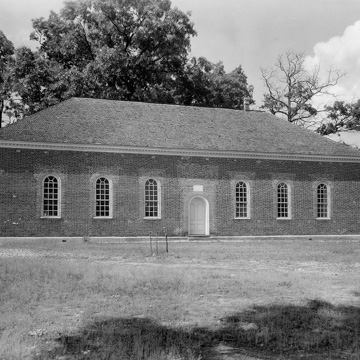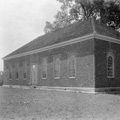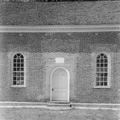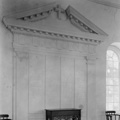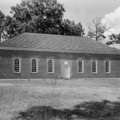Standing dramatically alone on its windswept site, Little Fork is a surviving example, rare in the Piedmont, of a nearly intact colonial house of worship. It has been attributed to Ariss because of its similarity to Lamb's Creek Church in King George County. John Voss, a local brickmason, built it and may have had a hand in the design. The church is a long, low structure of Flemish bond brick with its principal entrance in the south wall. The interior is intact and contains box pews and an elaborate carved reredos with a broken pediment and Doric pilasters.
You are here
Little Fork Church
1774–1776, attributed to John Ariss. 1974, restoration, Milton L. Grigg. Rixeyville vicinity (8 miles north of Culpeper on VA 229; .3 mile on VA 726)
If SAH Archipedia has been useful to you, please consider supporting it.
SAH Archipedia tells the story of the United States through its buildings, landscapes, and cities. This freely available resource empowers the public with authoritative knowledge that deepens their understanding and appreciation of the built environment. But the Society of Architectural Historians, which created SAH Archipedia with University of Virginia Press, needs your support to maintain the high-caliber research, writing, photography, cartography, editing, design, and programming that make SAH Archipedia a trusted online resource available to all who value the history of place, heritage tourism, and learning.




















